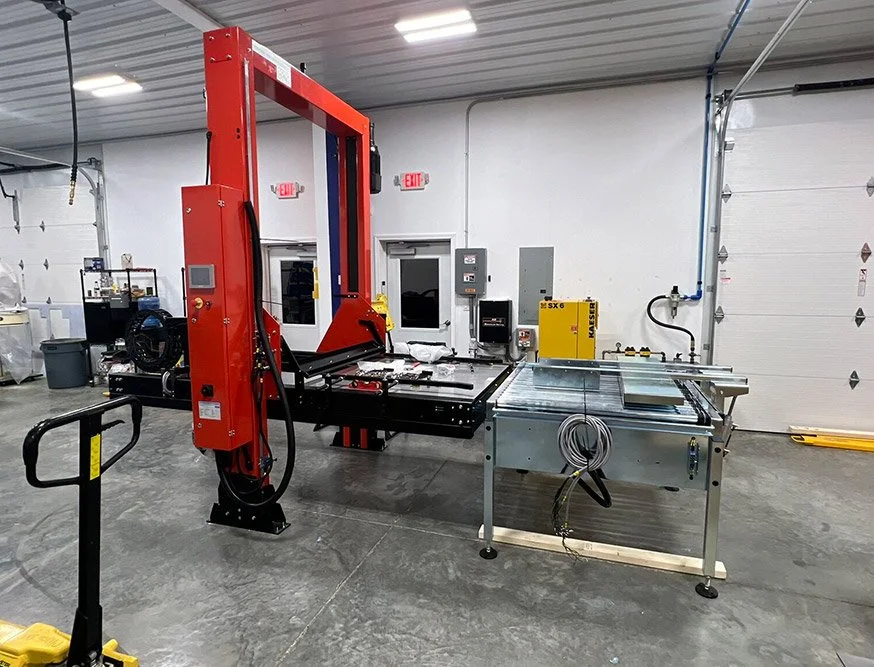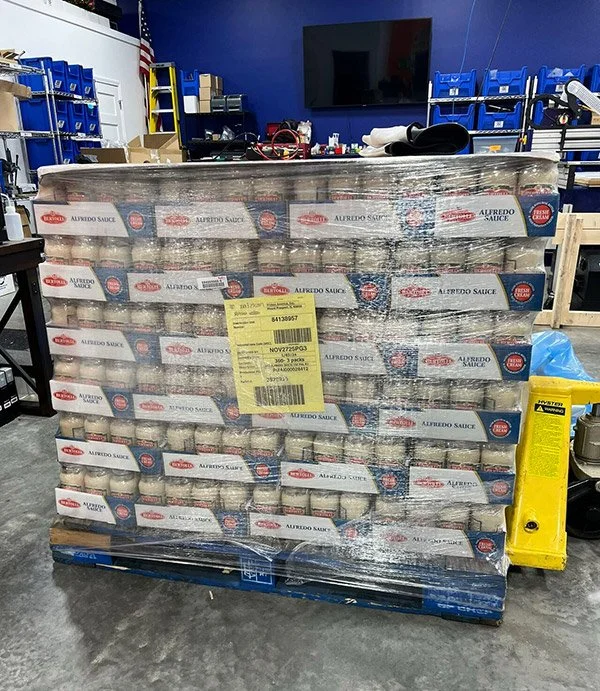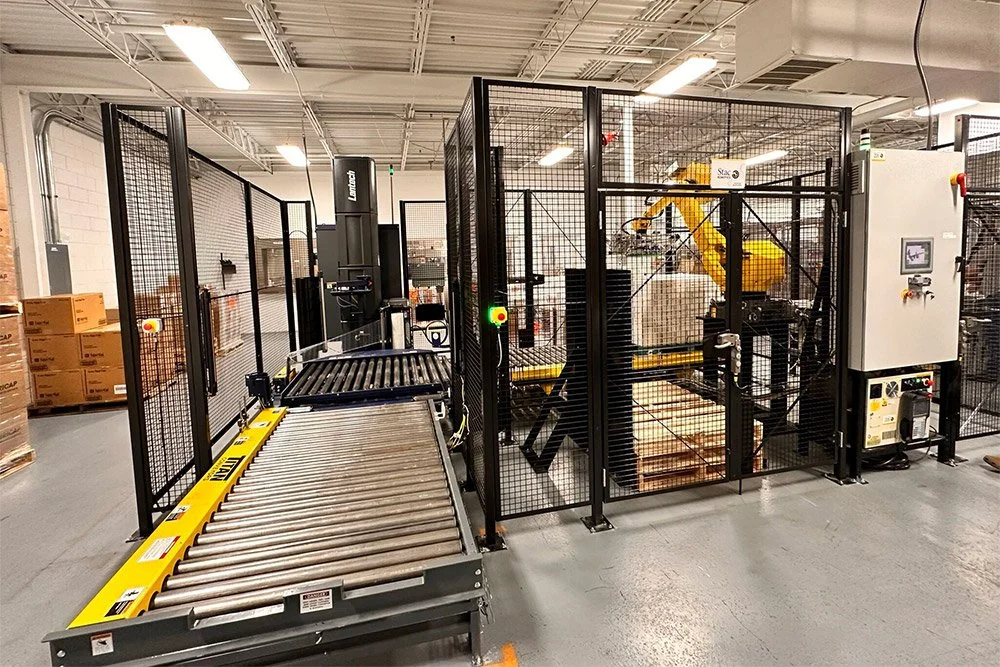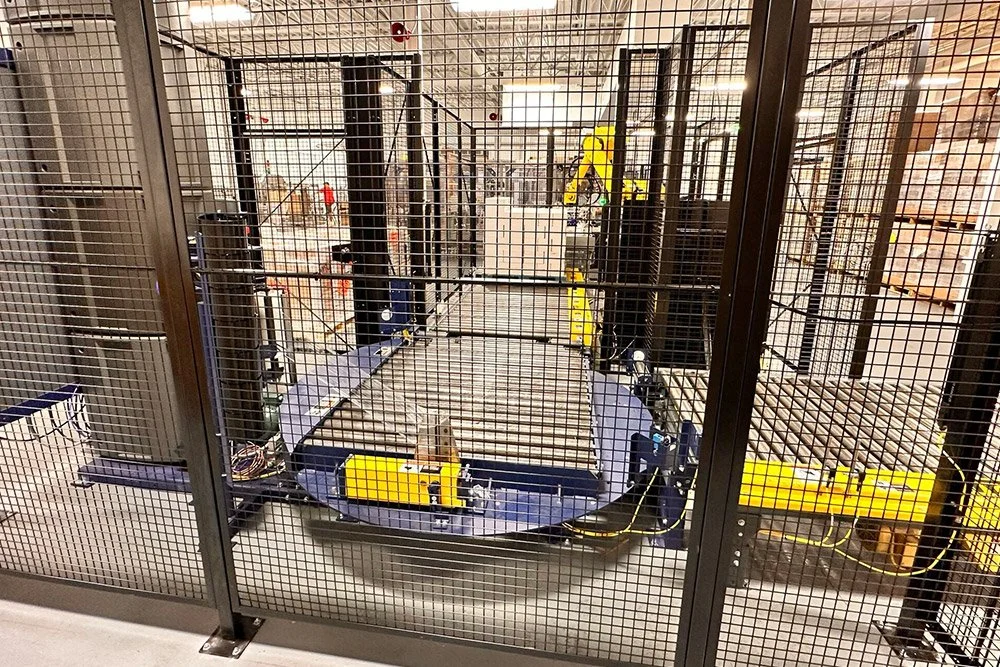When products are moved into the cell, the robot has been programmed to pick from a specified parameter or utilizes a vision system that allows the robot to identify the type of goods that are ready to be loaded or unloaded. Customizing the way that the load is handled ensures that spacing efficiencies and load stability are all taken into account.
robot palletizing
As products are fed into the cell via an infeed conveyor system, the robotic system is loading the area with a pallet to be palletized. As programmed, the robot automatically identifies and picks one or multiple products and precisely executes distributing them onto the pallet. The robotic system is programmed to navigate obstacles and maintain accuracy of positioning. Once a layer is complete the process starts over until the pallet is fully loaded and is conveyed forward to the next stage in the processing cycle.
robot DEPALLETIZING
Goods that are to be unloaded are delivered into the Robotic cell by an operator or pallet conveyor. The robot cell scans the product or utilizes a vision system to ensure that the inventory software accounts for the unloaded product. The robot then automatically depalletizes the load by full layers, rows of cases, single product cases or mixed handling which allows for assorted products to be unloaded at one time. Products are efficiently sorted or conveyed downstream into the next stage of the process.
Benefits
Minimal Product Damage | Prevents contact between products, reducing the risk of damage to fragile items
Gentle Handling | These systems can gently move fragile products such as glass and electronics
Handles Diverse Sizes | Can accommodate a wide range of product sizes and weights
Improved Quality Control | Prevents collisions - reducing risk of damage, defects or contamination
Flexibility in Spacing | Allows for gaps between products for better control of flow









